Introduction
When you look at an ancient remnant of humanity, it is almost impossible to imagine yourself in the shoes of those who once walked the same earth and undertook the seemingly Sisyphean task of creating something as magnificent as the Pyramids Of Giza (2600 BC), Stonehenge (3000) BC) or Newgrange (3200 BC).
4-5 thousand years is a really incomprehensible time. Thinking about the progress humanity has made in the last century alone and then extrapolating it 50 times. Agricultural practices were developed around 10,000 XNUMX years ago, so it seems sensible that humans would need a significant period of adaptation before coming out of the shadow of the ice age and developing civilizations, let alone buildings and monuments.
Although I was not imbued with academia myself, this was what I and many others believed until June 2011, when National Geographic published this:
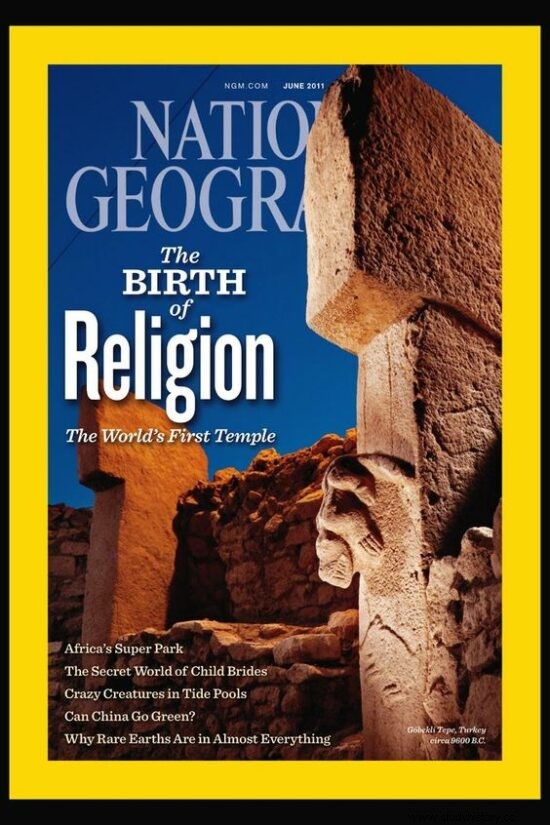
An old discovery
Göbekli Tepe (who directly translates Potbelly Hill), located in the Urfa province of Turkey, was first recognized as an archeological site in 1963. The universities of Istanbul and Chicago conducted a joint study of the site, led by Peter Benedict.
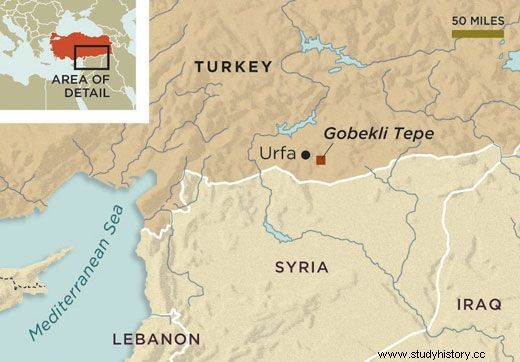
Peter Benedict described the title Potbelly Hill as a cluster of reddish mounds separated by depressions. The slopes were grouped with flint, and from this together with several broken limestone slabs found, he described what he thought were two small Islamic cemeteries.
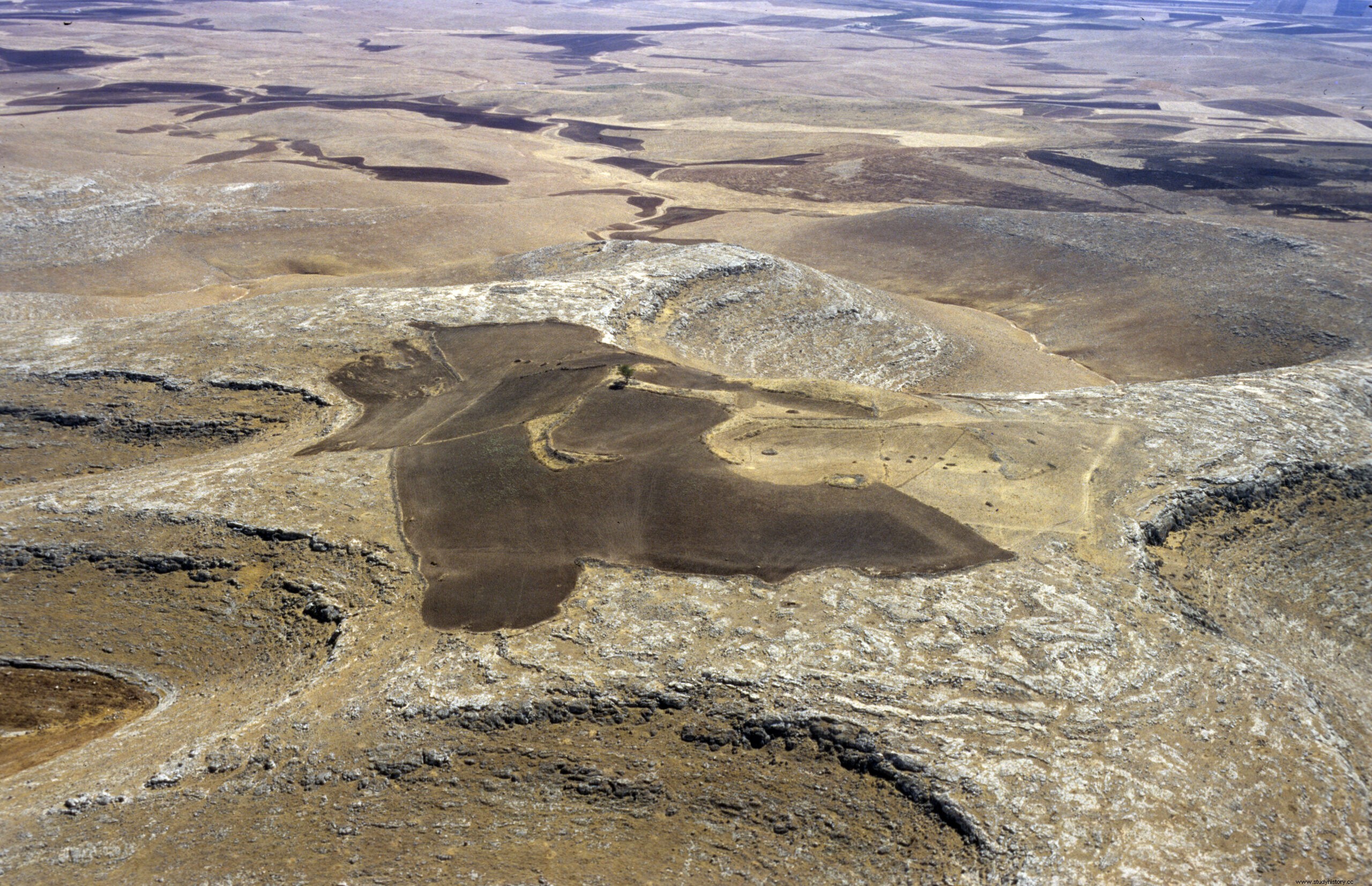
Further excavations seemed unlikely given the supposedly sacred nature of this burial site. It was there, in 1994, when Klaus Schmidt, after finding similarities between Göbekli Tepe and another Turkish excavation site, discovered that the "tombstones" may in fact be remnants of a Neolithic structure.
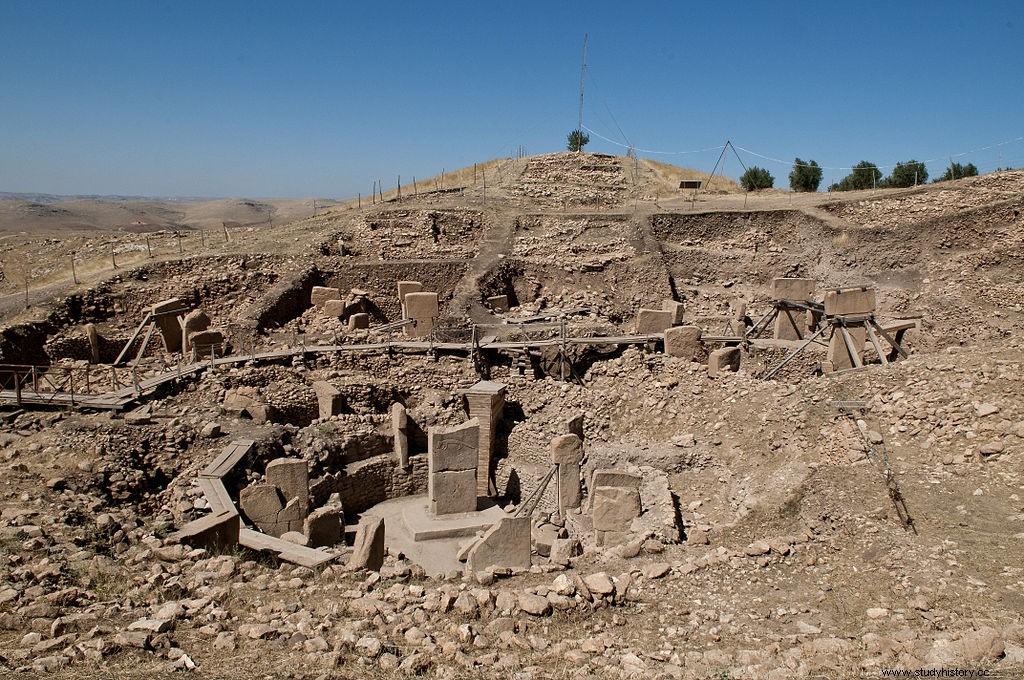
Looking back on the rediscovery, Klaus Schmidt said this:“Within a minute of seeing it, I knew I had two choices. Go away and do not tell anyone, or spend the rest of my life working here. ”
Roads to Civilization
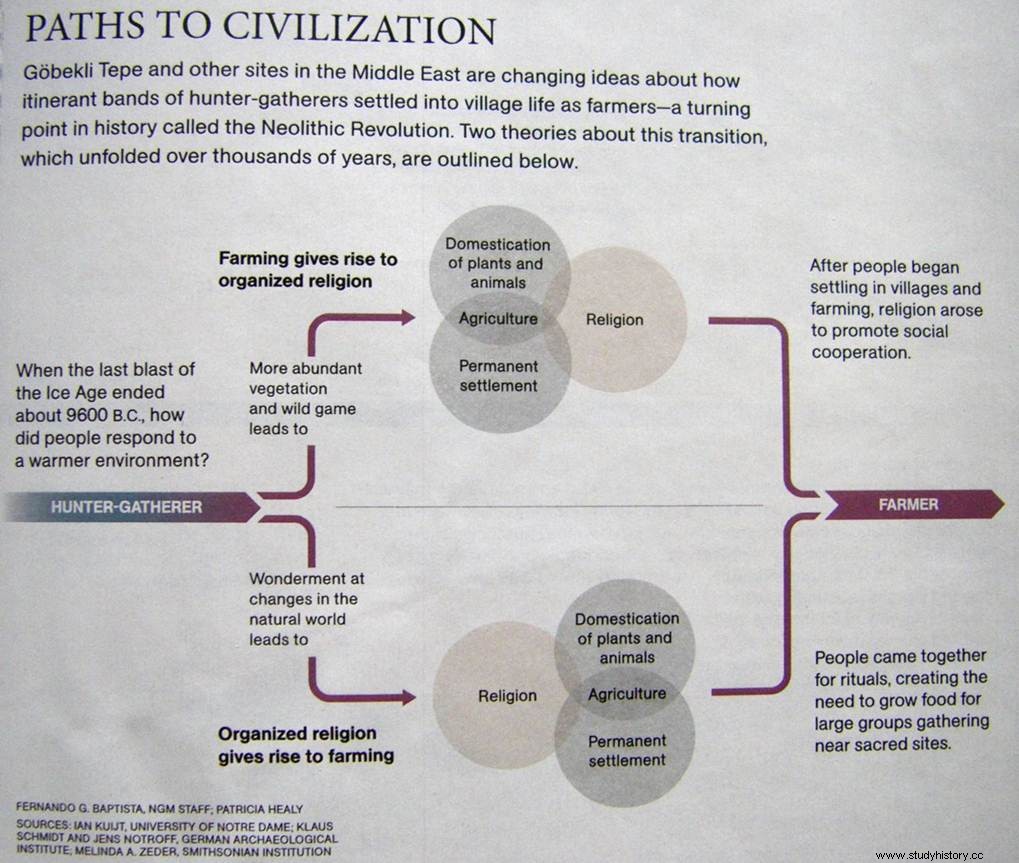
Who came first:society or religion?
Before Gobeklie Tepe, it was believed that humans had not begun to build structures until we had developed agriculture, about 10,000 years ago. The assumption was that people after the ice age began to develop not only agriculture, but permanent settlements.
Before this, people lived in incredibly small-scale communities with a few dozen people, and these welded communities were under the banner of 'tribes' (ethnolinguistic groups consisting of a few hundred people, who spoke the same language and shared certain customs).
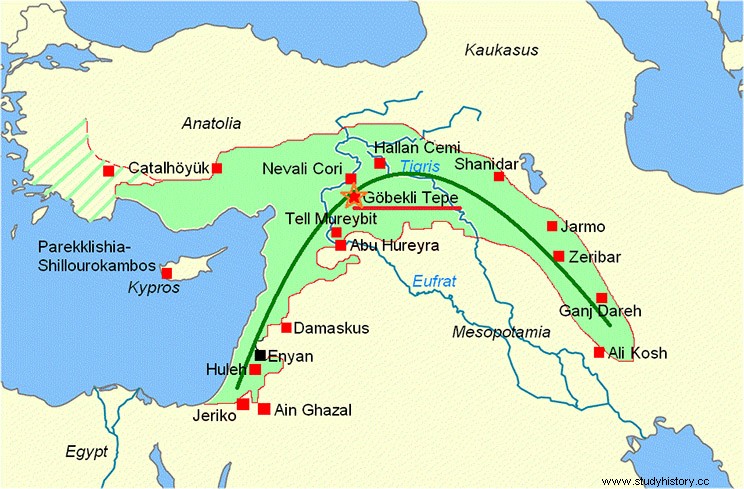
This began to change about 10,000 XNUMX years ago, with the development of agriculture. Humans actually began to produce food, which allowed them to sustain larger populations and remain in one place for generations at a time. This sedentary lifestyle then led to villages, then cities, communities, religion, writing, etc. Effectively to civilization.
This model suggests that the surplus of resources in these ancient societies is what led to the support structure that enabled the development of spirituality, and ultimately organized religion. Gobelin Tepe completely contradicts this chain of events.
Anatomy of Ancient Worship
Gobeklie Tepe is located in what became known as the Fertile Crescent (the region where the first agricultural communities in the Middle East and the Mediterranean originated around 9,000 BC).
Over the past 30 years, only 5-7% of Gobeklie Tepe have been uncovered. According to estimates, it may take another 50 years before the entire old complex has been explored.
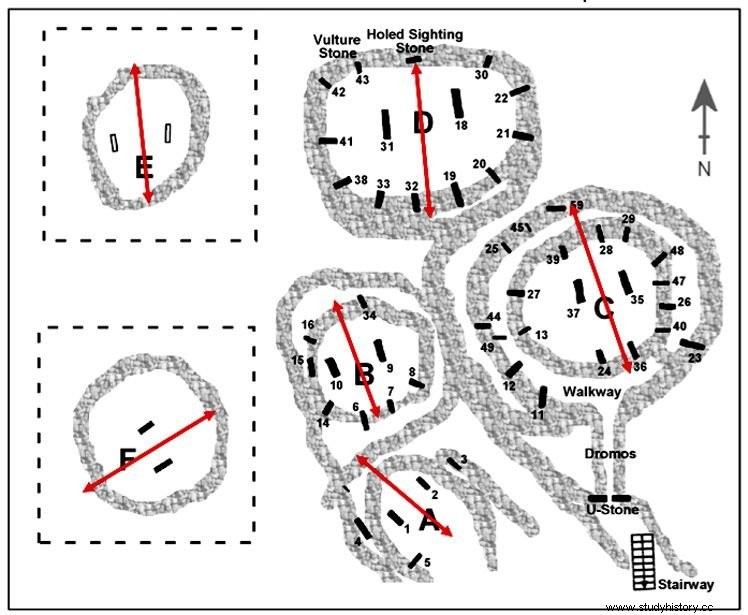
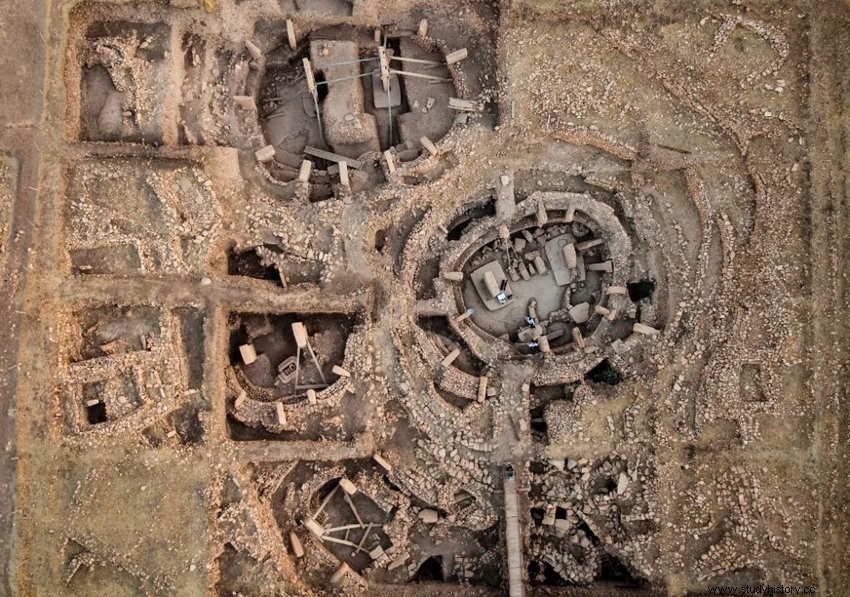
These two pictures show Gobeklie Tepe as it looks today. The complex is divided into these 6 cabinets, denoted by the letters AF. The lines indicate dozens of T-shaped columns, the largest of which measures around 5.5 meters and weighs between 8 and 10 tons. The smaller, surrounding posts still reach around 4 meters.
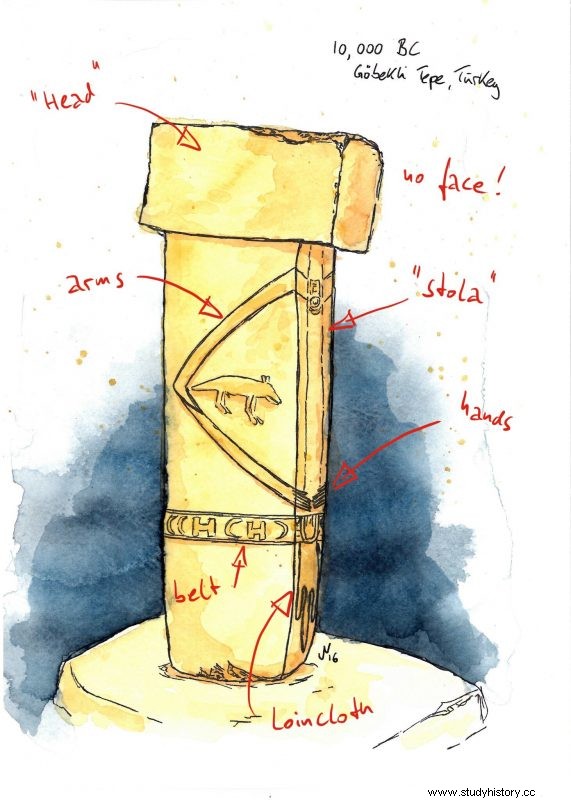
The Pillars of Civilization
Each column is adorned with several markings, many of which appear to be abstractions of human features. The "T" shape as well, while theorized to have been chosen for easy transport, can also have a ritual significance, such as representing the faceless head of a human-like figure.
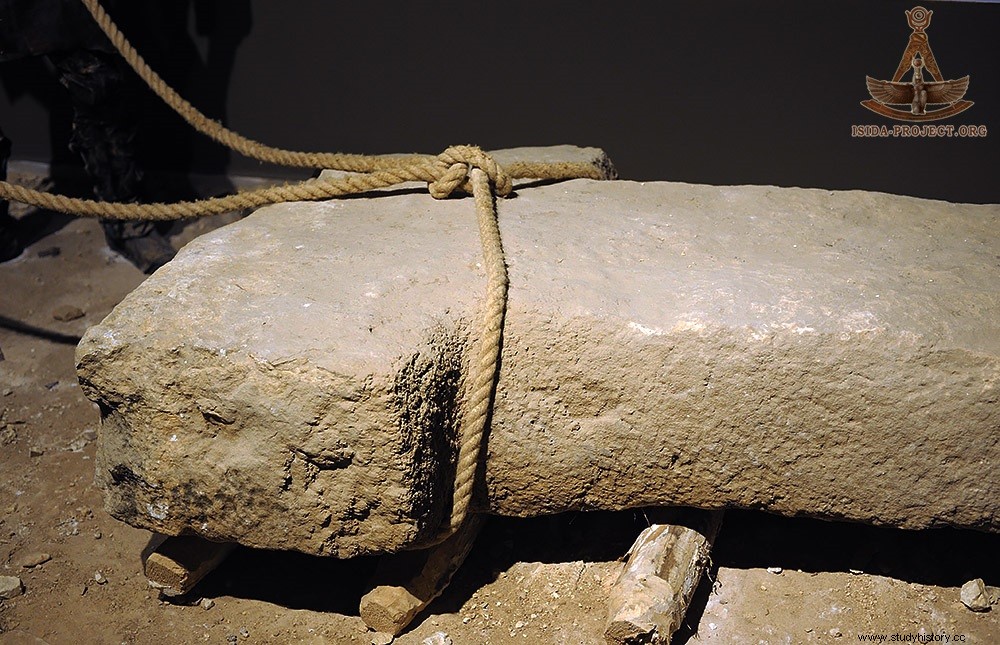
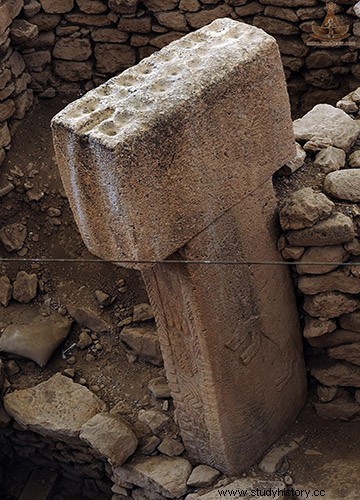
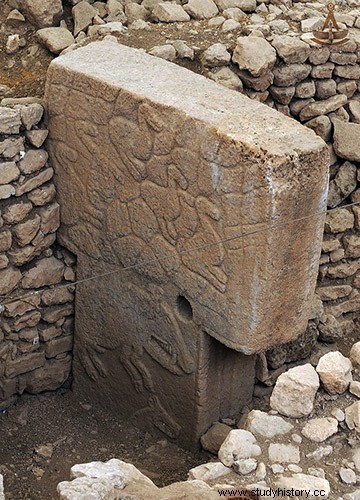
These columns have also been shown to have thorough carvings that appear to depict various animals, but which may also be representative again of a form of an ancient deity. Some pillars have depictions of lions of larger predators attached to them, which can be placed there to avert danger and protect the place.
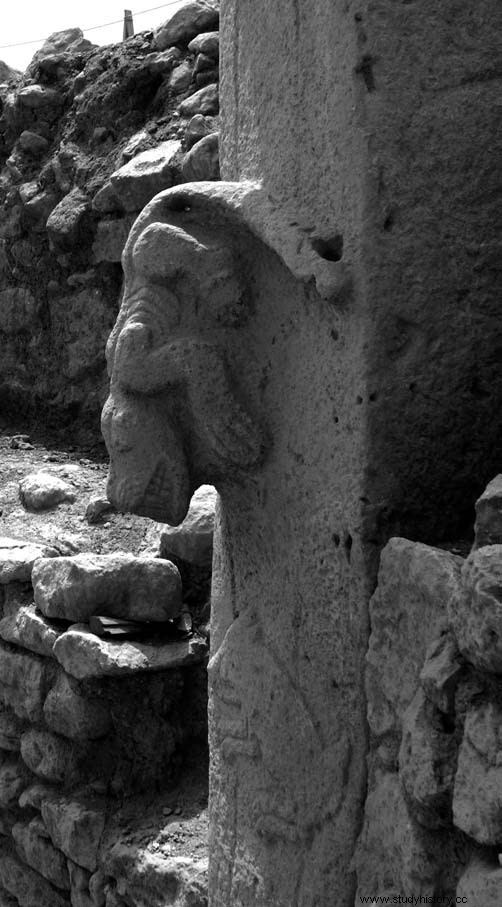
One thing to note is that when excavating Göbekli Tepe, there have been no findings that indicate that anyone has ever lived in the complex. This whole labyrinthine structure was built solely for worship.
The cold hard objects
We can run in circles all day and discuss the implications of the layout and columns, but what else was actually found on the site?
Debt
Although there have been no signs of human burial, several fragmented human bones have been found on Göbekli Tepe. The most notable of these are several, partially preserved, human skulls, many of which have been artificially modified.
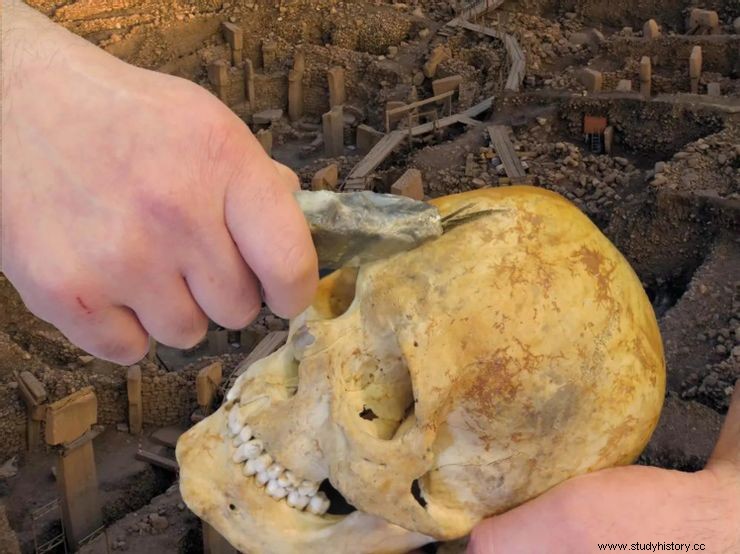
The skulls found show signs of deliberate puncture marks. Marks that archaeologists believe could not have been made by any animal. From this, researchers have concluded that the marks must be man-made.
But what then? Surely these skulls could only have belonged to invading marauders or the remains of a competing tribe. Upon closer inspection, however, these marks appear to be targeted sections. This has led to speculation that Göbekli Tepe could have been a real hotspot for bizarre rituals, or even stomping reasons for an upper paleo / Neolithic skull cult.

The skull that has been found also shows signs that they were skinned after death, as if not to retrieve the head, but the skull itself. Such a skull had a hole in it that had previously been filled with red ocher (a natural clay). This, combined with the vague and interpretable carvings that adorn the mentioned pillars, has led many to believe that the people of Göbekli Tepe had a kind of predilection for heads, and by extension, headlessness.
In addition to human remains, thousands of animal bones and hundreds of bone fragments were found at the site. After all, if you are enslaving yourself and building a magnificent monument that in the future will be considered beyond your relatively primitive understanding, you need something to eat.
Trading Tools
Although no tools used to construct the columns or structure have ever been found at the site, archaeologists have found several grindstones used in grain processing. The fact that these were found on the spot leads many to believe that cooking, as it was at the time, was done very close to or in Göbekli Tepe.
Göbekli Tepe is ahead of both the invention of the wheel and writing, so it is safe to assume that they did not have bowls or pots for cooking either. Still, there can only be so much wildlife to walk around. The workers then also had to rely on the collection of cereals. Nothing as lavish as today, just a little wheat, barley, oats and corn.
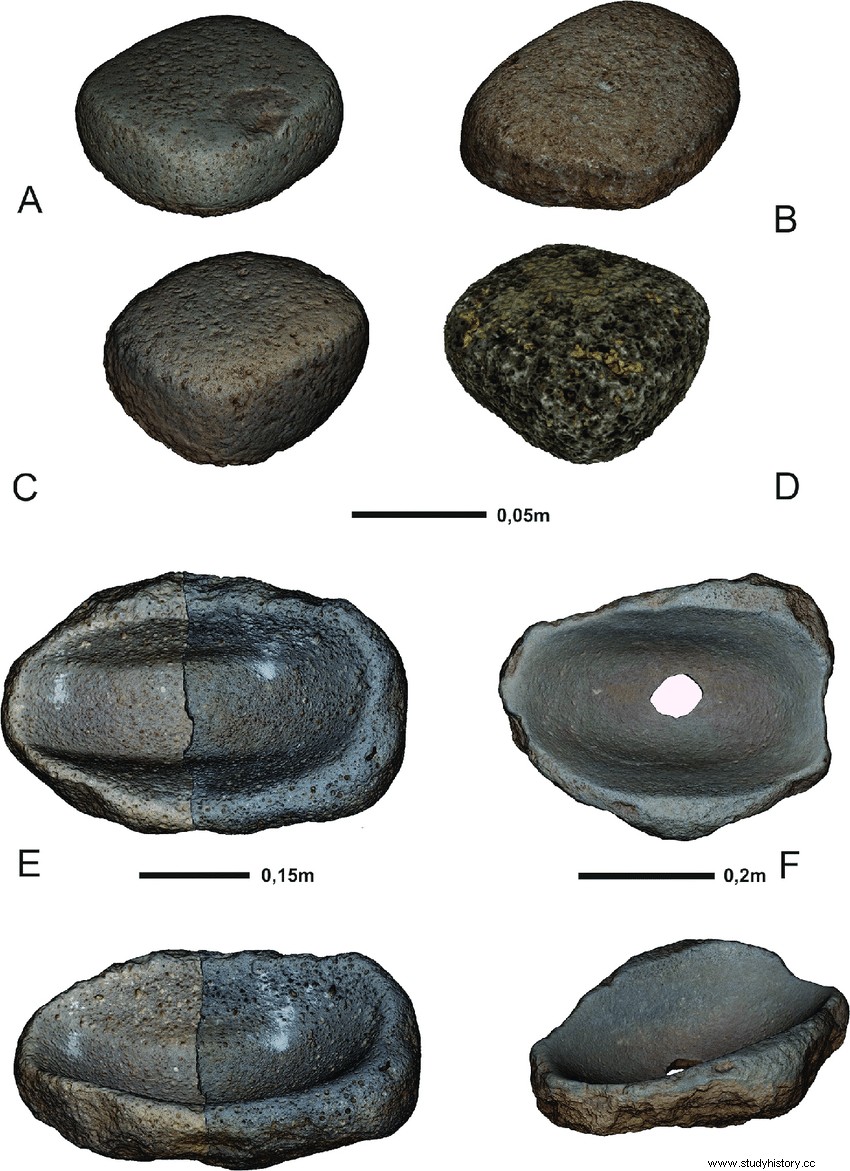
One of the most significant discoveries at Göbekli Tepe was these grinding tools. The grinding stones (AD) were used to process cereals in the grinding bowls (E&F). Think of it as a far more primitive version of a standard mortar and pestle. The process of, well, treating grain is to make the grain more digestible. What helps free, self-created food if you can not digest it? This is one of the earliest examples of food processing in the world.
The point of contention
Such a large enterprise would have required hundreds of workers and artisans to work in unison. From this we can deduce that for this number of workers to be present and efficient, the support society (ie those who actually gathered all the food) must have been in the thousands. Possibly tens of thousands.
Hunter-Gatherer Revision
The capacity of such a society to collect surplus food had to be limited, while the earliest complex on Göbekli Tepe was built around 9,600 1,000 BC, became the very first evidence of agriculture in the area dated to XNUMX years later.
From this we can then find out that all the food was either collected plant feed or wild game. This series of events is the exact opposite of what experts have taken for granted. A large society develops, first with sophisticated ritual customs and means / ability to build structures, THEN they develop a form of agriculture.
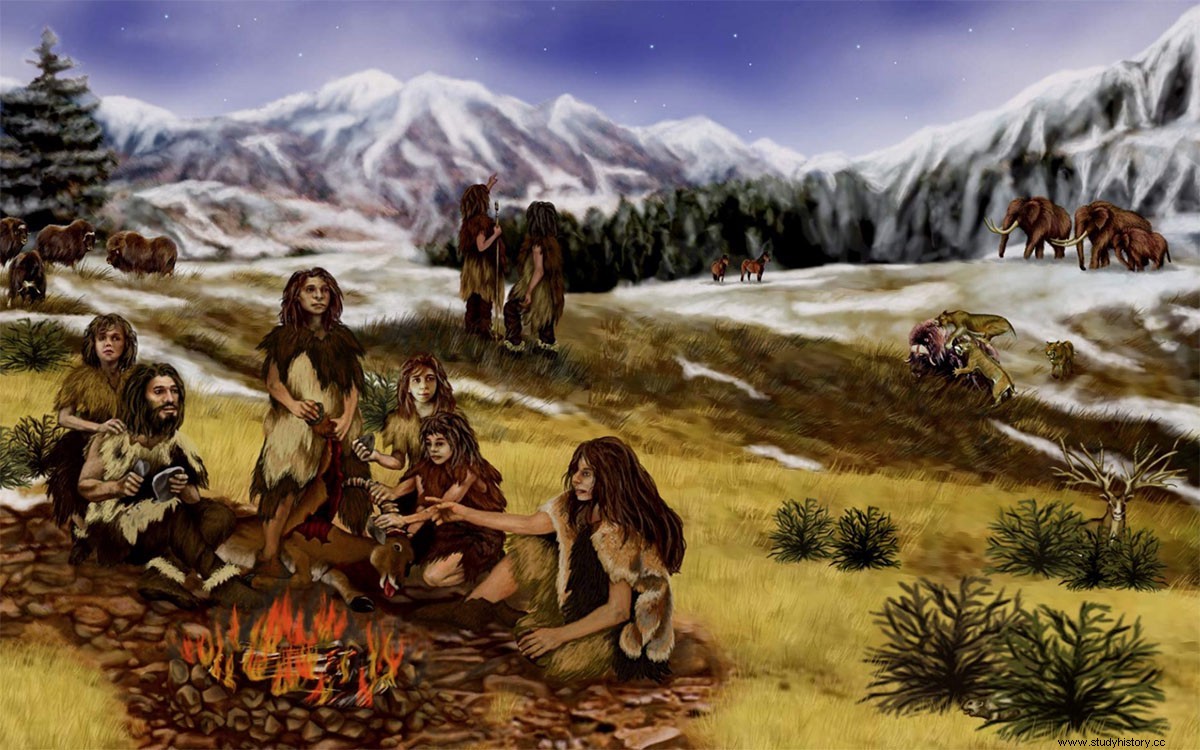
This completely inverts the cause and effect of how complex civilizations arose. An article in the aforementioned National Geographic issue of Göbekli Tepe suggests an alternative theory:
"Over time," says Schmidt, the need to provide adequate food for those who worked and gathered for ceremonies at Gobeklie Tepe may have led to the intensive cultivation of conditional products and the creation of some of the first strains in the home. In fact, researchers now believe that an agricultural center arose in southern Turkey, well within easy reach of Göbekli Tepe, at the time when the temple was at its highest. "
The eternal question
As shown in the diagram 'Path To Civilization', there are finally two conclusions to be drawn:
1. The amount of food led to final settlements and opened up for ideas such as organized religion.
OR
2. Religion was the catalyst where early people came together in greater numbers and held together to develop what we now call civilization.
Cultural significance in anthropology
Until this discovery, the development of human culture seemed much more immediate. It was as if we came confused, confused and just out of the ice age to survive. We must have learned to cultivate the land before we could begin to look inward and seek some form of spiritual enlightenment.
Before Göbekli Tepe, the earliest evidence of religious structures was dated to around 2/3 thousand BC. These monuments, such as the pyramids of Giza (2600 BC), were built by what were at least considered civilizations. About 7,000 years older than that, Göbekli Tepe is proof of the fact that the early man, although often cautious and distrustful of one another, was completely content to gather among thousands of like-minded people to build such a seemingly impossible monument. .
To be part of a tribe means to belong to a close-knit unit. One that you try to protect, and would even die for. This model can be extrapolated to explain the concepts of cities, nations and empires, but before Göbekli Tepe was discovered, the idea of hunter-gatherers joining in similar numbers was unthinkable.
After all, why would they do such a thing if they did not want to settle down? It seems that worship was no less present then than it is today. Wonder and worship tore these people from the cold belly of oblivion and united them into a single goal. Many of the mysteries and nagging questions that still surround Göbekli Tepe may never be answered, but despite this, the place is no less amazing in its design and art, and its builders no less extraordinary in its bravery and determination.
the conclusion
Whatever side of the debate you may find yourself in, you must be content with the fact that there is an erratic amount that we do not yet know about Göbekli Tepe, let alone the birth of complex societies.
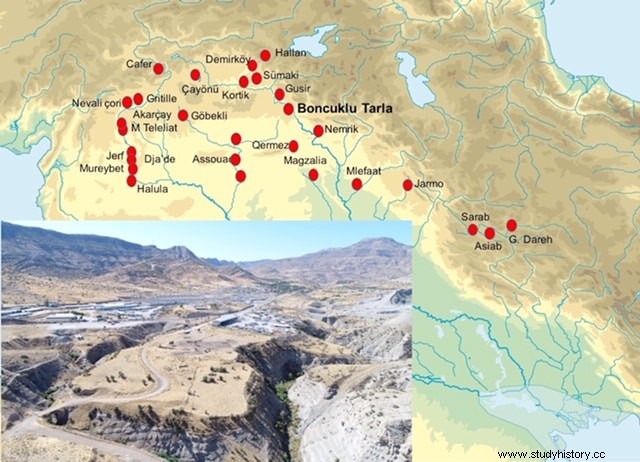
In 2012, in the eastern Anatolia region of Turkey, archaeologists discovered a site called Boncuklu Tarla, 300 km east of Göbekli Tepe. It is believed to be more than 1,000 years older than Göbekli Tepe, and contains the first known examples of temples and other religious structures.
Just as the gaps in history seem to be filled, we find new gaps in between. Who knows if we will ever be able to determine the absolute beginning of certain human customs such as religion? One thing we know for sure is that humanity has an indelible wonder, and it will certainly not end.
Do you like what you read? Then check out these similar articles:
The Ancient Wonders:https://www.yoair.com/blog/seven-wonders-of-the-ancient-world/
The Once Lost City of Django:https://www.yoair.com/blog/seven-wonders-of-the-ancient-world/
